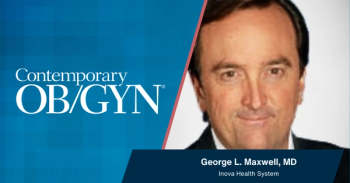
Guest Editorial: Practicing '30-something' medicine
GUEST EDITORIAL
Practicing '30-something' medicine
Residency training and the practice of obstetrics and gynecology are changing rapidlyand radically. As a mid-career ob/gyn, my world is quite different from that of senior physicians, who regale me with stories of a specialty once dominated by white Anglo-Saxon males. And the residents and students I come in contact with have still another point of view.
That's not to say that we aren't all connected by a deep kinship, but you just have to look at the statistics to see how radically the specialty is changing. In 1988 about one in five ob/gyns were women; by 1993, more than half were female.1 In little more than a decade, more women than men are expected to be practicing in our specialty.2 At the same time, the percentage of graduating US seniors choosing ob/gyn continues to decline, from 7.5% in 1993 to 5.9% 10 years later.3
Not surprisingly, the influx of new, largely female physicians into our specialty has created some conflict, as older and younger generations try to iron out their differences on issues like flexibility in residency and the balance of work and home life. As Dr. John M. Gibbons put it so well last year in his inaugural address as president of the American College of Obstetricians and Gynecologists, young physicians today "want a reasonable lifestyle, safe systems of care for their patients, freedom from frivolous lawsuits, and accessible continuing medical education."4
Many men and women enter ob/gyn fully expecting to be able to combine family and work life, but the reality for many is different. A survey of physician productivity done in 2001 showed that among ob/gyns under 40, 23% of women and 5% of men reduced their hours or stopped practicing entirely for an extended period to meet family needs, compared to 11% of those aged 40 to 50, irrespective of gender.5 I've personally come into contact with more than a few young doctors who have begun to seriously question the notions of "total commitment" to their specialty and the "total immersion" of our arguably brutal training. With the rewards of medicine being further and further crimped by the need to deal with insurance companies and complete and redo paperwork, many doctors are actively thinking about alternative ways, places, and schedules for their practice. And let's not forget the significant burden that malpractice represents for young clinicians: More than one in four ob/gyns have been sued for care provided during their residency.4 Among the other concerns raised about the specialty in a survey of recent residency program graduates were low reimbursement, long hours, and male discrimination.
To offer real-world solutions to the problems I've outlined, we introduce, in this issue, "Our Generation," a column written by and for young ob/gyns. "Our Generation" isn't just a recitation of medical facts or a regurgitation of cutesy practice management tips. It's hard-hitting and insightful advice on topics like:
Communicating with your nonphysician spouse when you're frustrated or depleted, or you've just completed the perfect operation.
Dealing with a difficult ob/gyn practice partner.
Ob/gyn practice and pregnancy: coping strategies.
Dealing with day care dilemmas when you're both on call.
Click here "
As the Contemporary OB/GYN Editorial Board Consultant for "Our Generation," I hope to provide you with some perspective on what's going on with ob/gyns in mid- to late-career. Above all, Drs. Fleischman, Gilpin, and I look forward to hearing your stories about life in the trenches. "Our Generation" is your column. We welcome your questions, comments, and input. Write to me at:
REFERENCES
1. American Medical Association. Women in medicine: 1995 Data source. Chicago, Illinois: American Medical Association, 1995.
2. American Medical Association. Women in medicine in America: In the mainstream. Chicago, Illinois: American Medical Association, 1991.
3. Signer MM, Beran RL. PGY-1 positions offered and filled by specialty and types of applicants in the NRMP in 2003: results of the National Resident Matching Program for 2003. Acad Med. 2003;78:653-656.
4. Gibbons JM Jr. Springtime for obstetrics and gynecology: will the specialty continue to blossom? Obstet Gynecol. 2003;102:443-445.
5. Pearse WH, Haffner WH, Primack A. Effect of gender on the obstetric-gynecologic work force. Obstet Gynecol. 2001;97:794-797.
Nanette F. Santoro, MD, is Professor and Director, Division of Reproductive Endocrinology, Department of Obstetrics, Gynecology and Women's Health, Albert Einstein College of Medicine, Bronx, N.Y.
P.S. from Dr. Lockwood
In addition to the new "Our Generation" column, don't forget to look at "
Nanette Santoro. Guest Editorial: Practicing '30-something' medicine. Contemporary Ob/Gyn Jun. 1, 2004;49:8-11.
Newsletter
Get the latest clinical updates, case studies, and expert commentary in obstetric and gynecologic care. Sign up now to stay informed.










